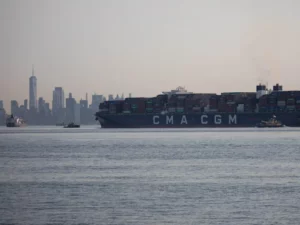OXFORD, Sept 27 (Reuters) – Speed has consistently been vital for supercar producers, and presently they’re in the race of their lives to go electric before environment strategy cuts their ignition motors.
That is the reason any semblance of Ferrari and Mercedes-Benz are going to new companies, for example, Oxford-based electric engine organization YASA for ability and innovation to tackle the special difficulties of energizing the best vehicles.
Batteries are massively weighty and electric engines overheat whenever driven excessively hard – large issues for a specialty industry that charges a huge number of dollars for lightweight vehicles fit for shouting cycle 10 laps of a track at max speed.
This year Daimler purchased YASA, which has fostered an”axial flux” elite electric engine that gauges 23 kg (50.7 lb), a small part of a close to 300 kg V12 motor in a Ferrari, and is about the size and state of a controlling wheel.
YASA as of now makes engines for Ferrari, Swedish supercar creator Koenigsegg, in addition to an anonymous British supercar organization. It will currently supply the superior AMG brand at Daimler, which will before long expect the name of its vehicle business Mercedes-Benz.
Based only a couple miles from “axial flux” has fostered a scope of water-cooled pivotal transition engines. The organization is equipping to deliver engines for the tremendous Asian motorbike market, yet revealed to Reuters it had made a bigger model and was in chats with one hypercar producer, and that two others had communicated revenue.
“These manufacturers know combustion engines forwards, backwards and inside out,” said Saietta Chief Commercial Officer Graham Lenden. “But they don’t know electric powertrains and what they’re looking for is someone to hold their hand.”
However this is an unknown area, with no reasonable guide to electric for elite vehicles yet. Supercar creators should contribute billions of dollars to endure the vanishing of burning motors, with no assurance that the advancements they embrace will pay off in the long haul.
WEIGHT IS THE ENEMY
Supercars and the best quality hypercars – both sportscars that skirt on proficient dashing level execution – are a profoundly beneficial, capital concentrated specialty market for automakers.
Consultancy AlixPartners and information firm IHS Markit gauge more than 152,000 “luxury” and “super luxury” sportscars going in cost from 100,000 to 10 million pounds ($137,000-13.7 million) will be sold worldwide in 2021, with the market expected to rise almost half to 223,000 vehicles in 2026.
YASA organizer Woolmer said, however, that his organization’s drawn out brief from Daimler was to bring the expenses down in later cycles of its engine so the German carmaker can utilize them across its whole vehicle range as it movements to electric.
“Automotive technology doesn’t scale to volume overnight, you tend to start with the premium niche sectors,” Woolmer says.
Creators of elite electric vehicles will at last need to discover approaches to foster lighter, all the more impressive batteries. Yet, as the present battery innovation can’t contend with the supported force of a petroleum motor, they are likewise reevaluating everything from electric engines to vehicle body materials.
Axial flux electric motors are flat, round devices – dubbed “pancakes” – that are lighter and more efficient than conventional cylindrical “radial flux” motors, or “sausages.”
YASA’s engine is oil cooled, so won’t ever overheat and is undeniably more productive than a traditional engine, said Tim Woolmer, who fostered the gadget as a feature of his doctorate at the University of Oxford and afterward established the organization in 2009.
Since the engine is more productive, it can expand the scope of an electric vehicle up to 7%, or on the grounds that it utilizes less force it permits carmakers to take out a portion of the substantial batteries and decrease their vehicle’s weight by to 10%, he added.
YASA has a little office at its Oxford base camp where it makes engines for Ferrari’s SF90 Stradale mixture and 296 GTB cross breed models, and test engines for AMG. Daimler is concentrating on the best way proportional up that creation at its own manufacturing plants.
YASA’s CEO Chris Harris said its securing by the German goliath had not finished its work with customers like Ferrari.
“They want us to continue working with our supercar customers because that’s the leading edge,” he added. “That technology when it matures cascades down.”
Ferrari’s Chief Technology Officer Michael Leiters depicted the YASA engine in its half and half models as an “car first”, adding that the Italian sportscar creator would incline toward the specialized mastery of providers in its mission to go electric.
Disclaimer: The views, suggestions, and opinions expressed here are the sole responsibility of the experts. No journalist was involved in the writing and production of this article.



